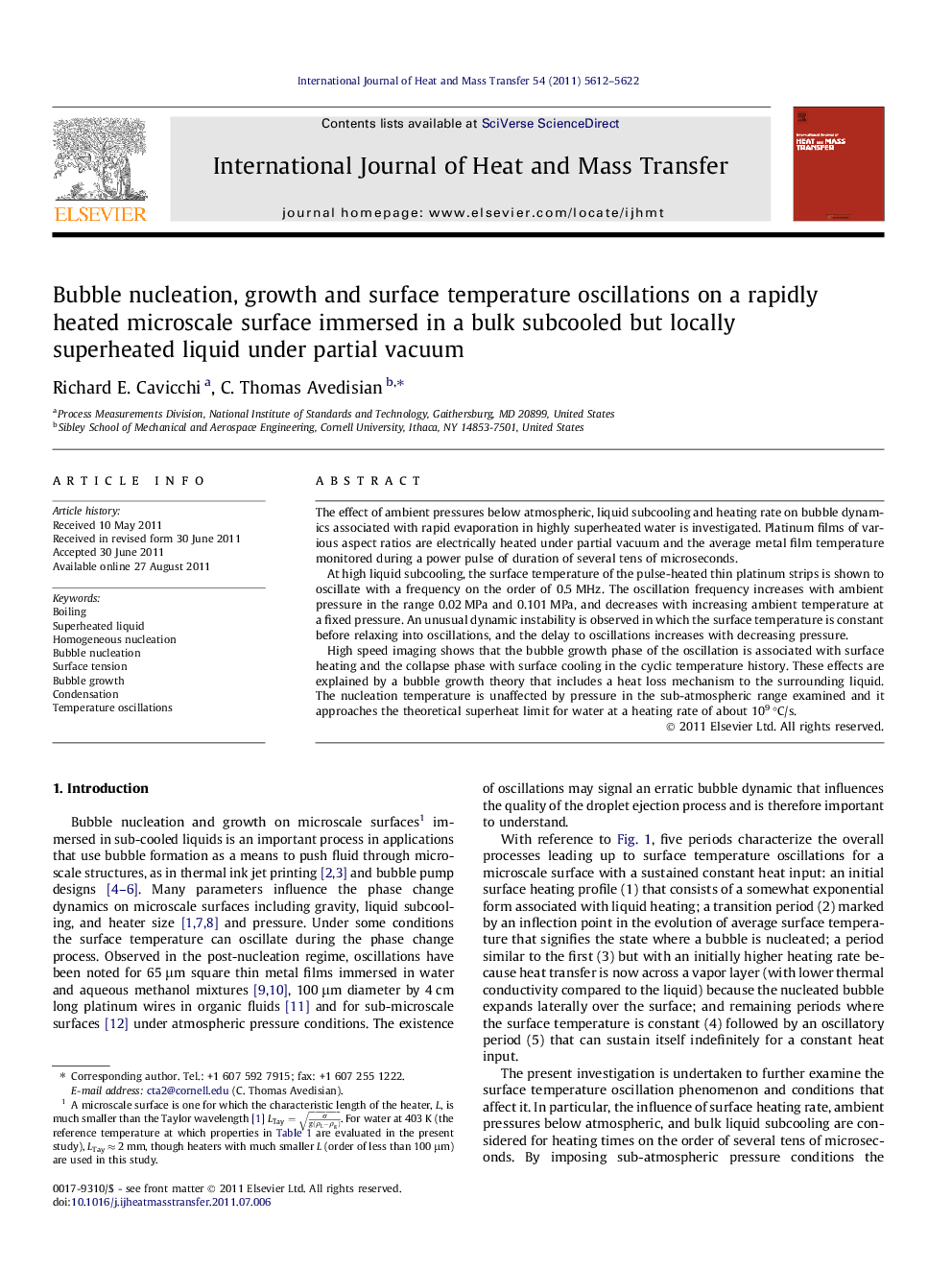| کد مقاله | کد نشریه | سال انتشار | مقاله انگلیسی | نسخه تمام متن |
|---|---|---|---|---|
| 659402 | 1458101 | 2011 | 11 صفحه PDF | دانلود رایگان |

The effect of ambient pressures below atmospheric, liquid subcooling and heating rate on bubble dynamics associated with rapid evaporation in highly superheated water is investigated. Platinum films of various aspect ratios are electrically heated under partial vacuum and the average metal film temperature monitored during a power pulse of duration of several tens of microseconds.At high liquid subcooling, the surface temperature of the pulse-heated thin platinum strips is shown to oscillate with a frequency on the order of 0.5 MHz. The oscillation frequency increases with ambient pressure in the range 0.02 MPa and 0.101 MPa, and decreases with increasing ambient temperature at a fixed pressure. An unusual dynamic instability is observed in which the surface temperature is constant before relaxing into oscillations, and the delay to oscillations increases with decreasing pressure.High speed imaging shows that the bubble growth phase of the oscillation is associated with surface heating and the collapse phase with surface cooling in the cyclic temperature history. These effects are explained by a bubble growth theory that includes a heat loss mechanism to the surrounding liquid. The nucleation temperature is unaffected by pressure in the sub-atmospheric range examined and it approaches the theoretical superheat limit for water at a heating rate of about 109 °C/s.
Journal: International Journal of Heat and Mass Transfer - Volume 54, Issues 25–26, December 2011, Pages 5612–5622